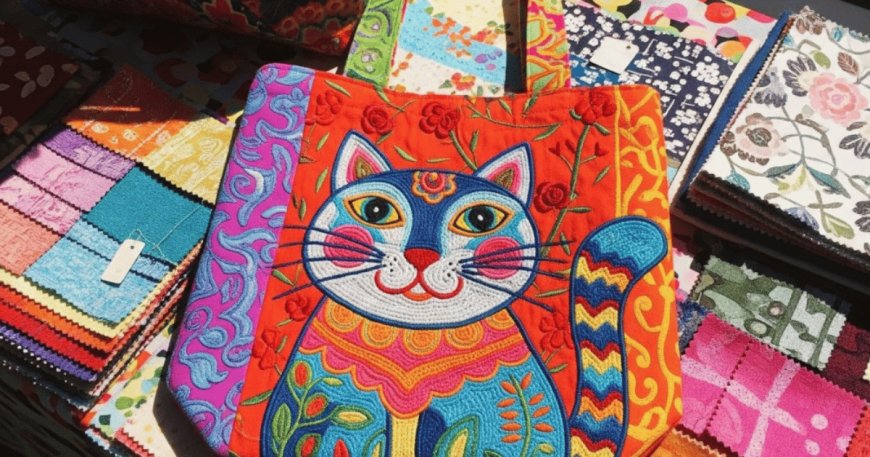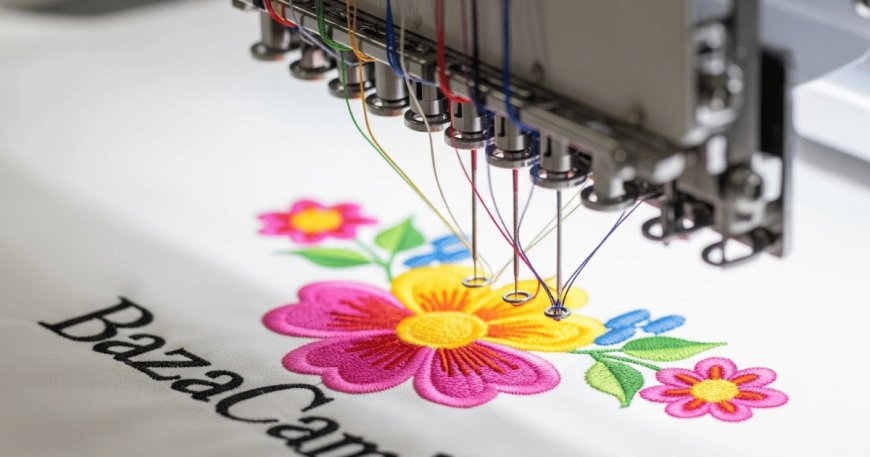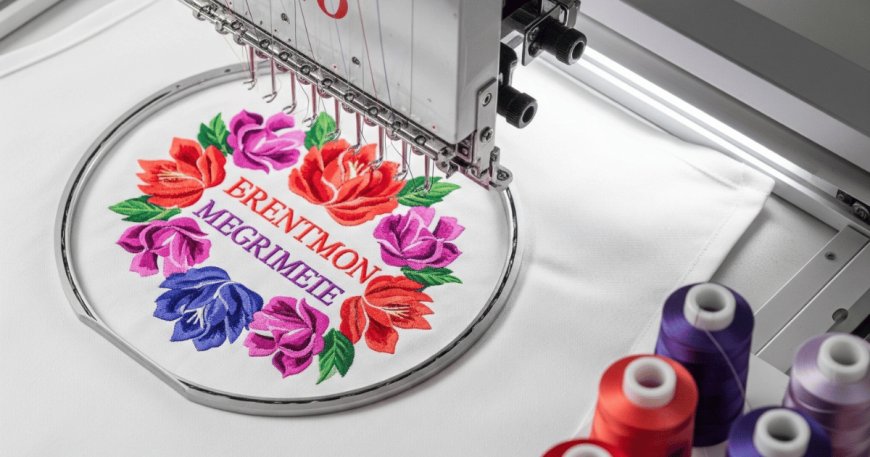How Embroidery Digitizing Sparks Creative Craft Success: 7 Proven Ways to Transform Designs Into Masterpieces
Embroidery digitizing transforms your creative designs into high-quality stitch patterns. Discover how this tech-driven craft empowers hobbyists, entrepreneurs, and designers with expert precision.

Introduction: Stitching the Future of Creativity
Embroidery digitizing is more than just a trendit's a revolution in how we create, personalize, and brand textile art. Whether you're a fashion designer, a hobbyist, or a small business owner, embroidery digitizing lets you bring your most intricate ideas to life with precision and style.
In this article, well uncover how this creative technology bridges traditional craftsmanship with modern innovationplus 7 proven ways to supercharge your craft success using embroidery digitizing.
What is Embroidery Digitizing?
Embroidery digitizing is the process of converting artwork into a digital embroidery file that embroidery machines can read. These files guide the machine on how to stitch the designdictating stitch type, direction, density, and sequence.
The Technical Side of Digitizing
Digitizing involves software like Wilcom, Embird, or Hatch, where the digitizer manually maps out the design's path. Unlike automatic image conversion, this step-by-step process requires technical knowledge and creative insight.
Evolution from Hand Stitching to Digital Craft
Once upon a time, every stitch was hand-placed. Today, machines and digitized files ensure consistency, speed, and accuracywithout sacrificing creativity. Its the perfect fusion of old-world charm and modern precision.
Why Embroidery Digitizing is a Game-Changer for Creators

Precision and Professionalism in Every Thread
With digitizing, even the smallest details of a logo or design are stitched out with machine-perfect accuracy. This elevates your final product from handmade to high-end quality.
Time Efficiency for High-Volume Projects
Forget manually hooping, measuring, or aligningdigitized designs streamline everything. Whether youre stitching 1 or 1,000 pieces, digitizing saves hours of time and tons of effort.
7 Proven Ways Embroidery Digitizing Enhances Craft Success
1. Converts Complex Artwork into Stitchable Designs
Digitizing makes it possible to translate a hand-drawn sketch or digital image into a precise embroidery file. This opens doors for creativityno more limits based on stitch complexity.
2. Unlocks Limitless Customization
Add names, colors, fonts, or elements with ease. With digitizing, every customer can get something one-of-a-kind without restarting the design process.
3. Bridges the Gap Between Creativity and Production
Designers and production teams often struggle to meet in the middle. Digitizing creates a universal file both sides can work from, avoiding confusion and costly errors.
4. Enhances Brand Identity for Small Businesses
Custom logos and brand messages stitched onto uniforms, caps, or totes make a bold, professional statement. Digitizing ensures your branding is consistent across every stitch.
5. Saves Time and Material with Smart Stitching
A well-digitized file minimizes thread jumps and trims. That means less waste, fewer machine errors, and faster production.
6. Empowers Home-Based Businesses and Entrepreneurs
Digitizing levels the playing field. With a home embroidery machine and digitized files, you can launch a full-service embroidery business right from your living room.
7. Ensures Scalability and Reproducibility
Need to recreate the same design across dozens of garments or in multiple sizes? Digitizing allows you to scale up without compromising quality.
Tools and Software Used in Embroidery Digitizing
Leading Digitizing Software Options
-
Wilcom
-
Hatch Embroidery
-
Brother PE-Design
-
Embird
Each offers unique features for beginners to pros.
Hardware Compatibility and File Formats
Digitized designs must match your embroidery machines formatlike .DST (Tajima), .PES (Brother), or .EXP (Melco). Always check for compatibility before exporting your files.
Choosing the Right Embroidery Digitizing Service
What to Look for in a Provider
-
Experience in your niche (logos, hats, patches)
-
Fast turnaround
-
Sample previews before final files
-
Revisions included
Questions to Ask Before Hiring
-
What file formats do you support?
-
Do you offer rush delivery?
-
Can I see a stitch-out sample?
-
Whats your revision policy?
External Link: Learn more from Madeira USA's guide on choosing digitizing services
Common Mistakes to Avoid in Embroidery Digitizing
Overcomplicated Designs
Too many details can look great on screen but fail during stitching. Simplify where necessary.
Ignoring Fabric Type
Different fabrics need different stitch types and densities. Not adjusting your file = puckering, misalignment, or even garment damage.
Case Studies: Creative Success Stories

A Small Brand Goes Big with Digitizing
A local sportswear brand digitized their logo and started offering embroidered team gear. Within months, their online orders tripled thanks to the premium look.
Personalized Gifts That Made an Impact
An Etsy seller began offering custom embroidered baby blankets. Digitized names and dates made each gift specialand helped her become a top-rated seller.
FAQs
1. What is the average cost of embroidery digitizing?
Costs vary, but most simple logos range from $10$30. Complex designs can cost more depending on stitch count and detail.
2. Can I digitize my own design without software?
Not really. You need specific digitizing software and skills. Free tools rarely offer professional results.
3. How long does the digitizing process take?
Professionals can digitize a standard design within 1248 hours. Rush services are available for a fee.
4. Which is better: manual or auto digitizing?
Manual digitizing is superior in quality and control. Auto digitizing can work for simple tasks but often lacks detail.
5. What file format should I request for my embroidery machine?
It depends on your machine. For example, Brother uses .PES, Tajima uses .DST. Always double-check before ordering.
6. Is digitizing required for every new design?
Yes. Every new design must be digitized at least once. However, you can reuse that file forever afterward.
Conclusion
Embroidery digitizing is the key that unlocks precision, professionalism, and profit for creatives and businesses alike. Whether you're customizing garments, launching a brand, or perfecting your craft, digitizing transforms your visions into stitch-perfect reality.
So don't settle for lessdigitize your creativity, and stitch your way to success.


















